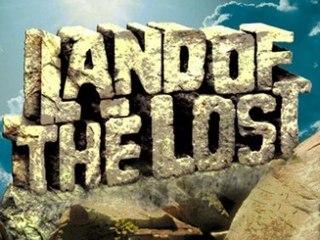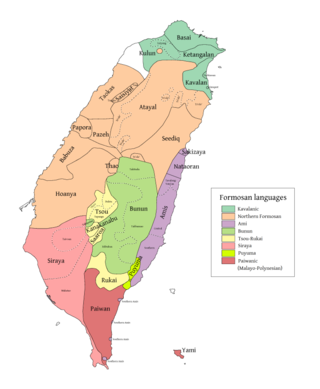Related Research Articles

Land of the Lost is a children's adventure television series created by David Gerrold and produced by Sid and Marty Krofft, who co-developed the series with Allan Foshko. It is a live-action show mixed with stop-motion animated dinosaurs, originally aired on Saturday mornings from 1974 to 1976, on the NBC television network. CBS used it as a summer replacement series from 22 June 1985 – 28 December 1985 and 20 June 1987 – 5 September 1987. It has since become a 1970s American cult classic. Krofft Productions remade the series in 1991, and adapted it into a feature film in 2009.

Kam Mueang or Northern Thailanguage is the language of the Northern Thai people of Lanna, Thailand. It is a Southwestern Tai language that is closely related to tai lue language. Kam Mueang has approximately six million speakers, most of whom live in the native Northern Thailand, with a smaller community of Lanna speakers in northwestern Laos.

The Tibetan script is a segmental writing system (abugida) of Indic origin used to write certain Tibetic languages, including Tibetan, Dzongkha, Sikkimese, Ladakhi, Jirel and Balti. It has also been used for some non-Tibetic languages in close cultural contact with Tibet, such as Thakali. The printed form is called uchen script while the hand-written cursive form used in everyday writing is called umê script. This writing system is used across the Himalayas, and Tibet.

Wichita is an extinct Caddoan language once spoken in Oklahoma by the Wichita and Affiliated Tribes. The last fluent heritage speaker, Doris Lamar-McLemore, died in 2016, although in 2007 there were three first-language speakers alive. This has rendered Wichita functionally extinct; however, the tribe offers classes to revitalize the language and works in partnership with the Wichita Documentation Project of the University of Colorado, Boulder.

Land of the Lost is a half-hour Saturday-morning children's television series that debuted on ABC in the fall of 1991, a remake of the original series of the same name which ran from 1974 to 1976. Re-runs were later picked up by Nickelodeon from 1995 to 1997. Tiger Toys received the license to produce a toyline based on the series, which included regular and "talking" action figures, several dinosaurs and playsets, an electronic "Crystal Sword", as well as an electronic LCD game and a board game.

Caveman is a 1981 slapstick comedy film written and directed by Carl Gottlieb and starring Ringo Starr, Dennis Quaid, Shelley Long and Barbara Bach.

Masbateño or Minasbate is a member of Central Philippine languages and of the Bisayan subgroup of the Austronesian language family spoken by more than 724,000 people in the province of Masbate and some parts of Sorsogon in the Philippines. Masbatenyo is the name used by the speakers of the language and for themselves, although the term Minásbate is sometimes also used to distinguish the language from the people. It has 350,000 speakers as of 2002, with 50,000 who speak it as their first language. About 250,000 speakers use it as their second language.
Victoria Alexandra Fromkin was an American linguist who taught at UCLA. She studied slips of the tongue, mishearing, and other speech errors, which she applied to phonology, the study of how the sounds of a language are organized in the mind.
Oroha, categorized as an Austronesian language, is one of many languages spoken by Melanesian people in the Solomon Islands. It is also known as Maramasike, Mara Ma-Siki, Oraha, and Oloha, and is used primarily in the southern part of Malaita Island within the Malaita Province. Little Mala is composed of three indigenous languages of the 'Tolo' people which are Na’oni, Pau, and Oroha. They are all slightly different, yet come from the same origin. The three languages may be thought of as different dialects of the same language. The three Tolo villages now harbor schools under the Melanesian Mission.
Apurinã, or Ipurina, is a Southern Maipurean language spoken by the Apurinã people of the Amazon basin. It has an active–stative syntax. Apurinã is a Portuguese word used to describe the Popikariwakori people and their language. Apurinã indigenous communities are predominantly found along the Purus River, in the Northwestern Amazon region in Brazil, in the Amazonas state. Its population is currently spread over twenty-seven different indigenous lands along the Purus River. with an estimated total population of 9,500 people. It is predicted, however, that fewer than 30% of the Apurinã population can speak the language fluently. A definite number of speakers cannot be firmly determined because of the regional scattered presence of its people. The spread of Apurinã speakers to different regions was initially caused by conflict or disease, which has consequently led natives to lose the ability to speak the language for lack of practice and also because of interactions with other communities.
Leco, also written as Leko, is a language isolate that, though long reported to be extinct, is spoken by 20–40 individuals in areas east of Lake Titicaca, Bolivia. The Leco ethnic population was 13,527 in 2012.

Siraya is a Formosan language spoken until the end of the 19th century by the indigenous Siraya people of Taiwan, derived from Proto-Siraya. Some scholars believe Taivoan and Makatao are two dialects of Siraya, but now more evidence shows that they should be classified as separate languages.

"The Sleestak God" is the second episode of the first season of the 1974 American television series Land of the Lost. Written by David Gerrold and directed by Dennis Steinmetz, it first aired in the United States on September 14, 1974 on NBC.

"Tag-Team" is the fifth episode of the first season of the 1974 American television series Land of the Lost. Written by Norman Spinrad and directed by Dennis Steinmetz, it first aired in the United States on October 5, 1974 on NBC.
Ila (Chiila) is a language of Zambia. Maho (2009) lists Lundwe (Shukulumbwe) and Sala as distinct languages most closely related to Ila. Ila is one of the languages of the Earth included on the Voyager Golden Record.
Awara is one of the Finisterre languages of Papua New Guinea. It is part of a dialect chain with Wantoat, but in only 60–70% lexically similar. There are around 1900 Awara speakers that live on the southern slopes of the Finisterre Range, they live along the east and west sides of Leron River basin.

The Ibanag language is an Austronesian language spoken by up to 500,000 speakers, most particularly by the Ibanag people, in the Philippines, in the northeastern provinces of Isabela and Cagayan, especially in Tuguegarao, Solana, Abulug, Cabagan, and Ilagan and with overseas immigrants in countries located in the Middle East, United Kingdom and the United States. Most of the speakers can also speak Ilocano, the lingua franca of northern Luzon island. The name Ibanag comes from the prefix I which means 'people of', and bannag, meaning 'river'. It is closely related to Gaddang, Itawis, Agta, Atta, Yogad, Isneg, and Malaweg.

The Karay-a language is an Austronesian regional language in the Philippines spoken by the Karay-a people, mainly in Antique.
Belter Creole, also simply known as Belter, is a constructed language developed by the linguist and polyglot Nick Farmer for The Expanse television series. In the universe, it was spoken by Belters, inhabitants of the asteroid belt and outer planets of the Solar System.
References
- ↑ "Wesley Eure fan-page". Facebook. Retrieved 2021-06-09.